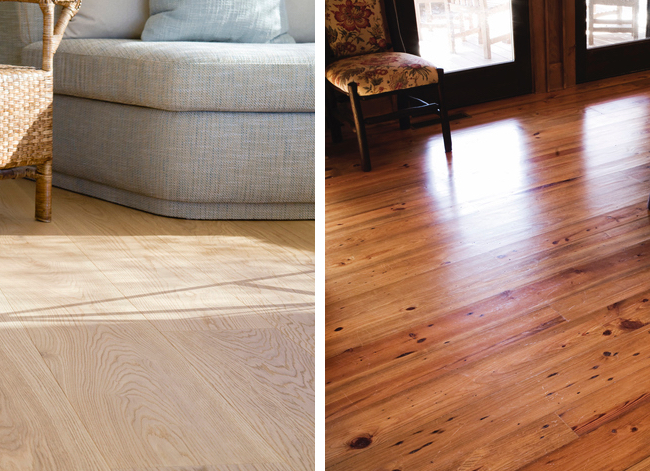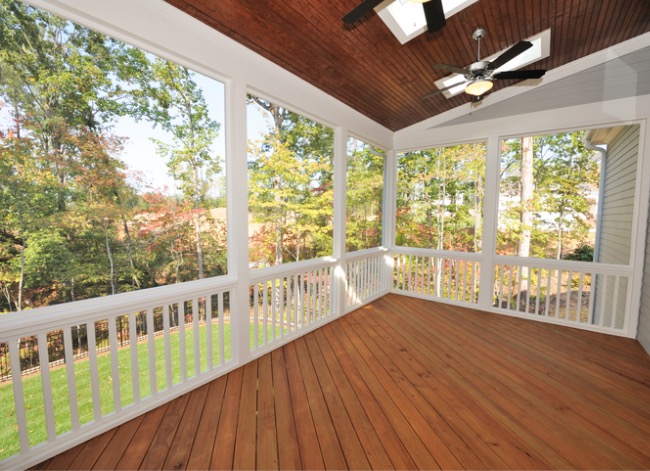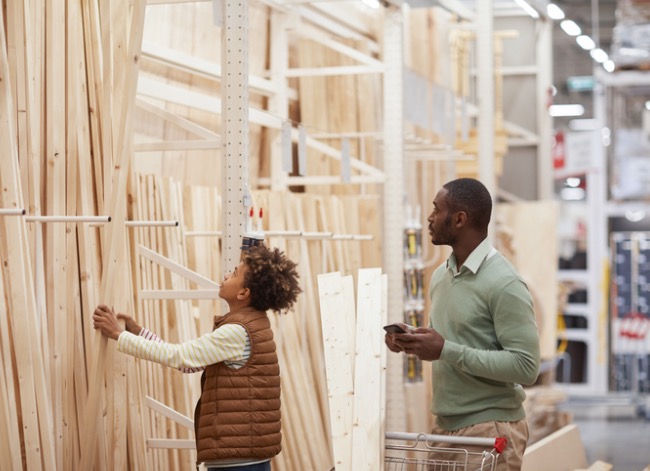

We may earn revenue from the products available on this page and participate in affiliate programs. Learn More ›
Whether it’s putting up a shed, laying down hardwood flooring, or building a new dining room table, choosing the right lumber for the job is key to achieving satisfying results. But, making the right selection can be harder than it sounds. Walk through the lumber aisles of the local home improvement store and you’ll find many types of wood species, ranging from common pine to more expensive woods like oak and teak.
Lumber dealers who specialize in selling hardwood have an even larger selection with more exotic woods such as alder and ipe. Determining whether a project demands hardwood or softwood is the first step in determining what wood is best for the job. This guide can make the decision process easier by breaking down the main differences between these two wood types.
While deciduous trees produce hardwood, softwood comes from coniferous trees.
For those rusty with their elementary school science, deciduous trees have leaves that change colors in the fall, die, and fall off, and then grow new leaves in the spring. They originate from enclosed seeds surrounded by either a hard shell, such as an acorn or walnut, or fruit, such as a cherry. Among many other kinds, popular deciduous trees include oak, beech, birch, and walnut.
Coniferous trees are evergreens that keep their foliage, which consists of either scaly leaves or needles, all year round. Unlike deciduous trees, seeds from evergreen trees are exposed to the elements. Common coniferous trees include pine, cedar, spruce, fir, and juniper.

Hardwood is heavier and more durable than softwood, which is usually reserved for windows and framing.
The weight difference between hardwood and softwood is noticeable. For example, oak weighs between 37 and 56 pounds per cubic foot while a cubic foot of pine weighs between 22 and 35 pounds. The increased weight is part of what makes hardwood more durable and, well, harder.
Hardwoods better resist dents, divots, and scratches, so they can be ideal for construction projects that must be able to endure a significant amount of abuse. For example, hardwoods like oak, teak, maple, and hickory are used for flooring, chairs, or a dining room table.
That’s not to say that softwoods are by any means weak. Pine is the most commonly used building material, making up the majority of the framing used in homes.
RELATED: 7 Strong Types of Wood Joints Worth Knowing
Oak, mahogany, and teak are some of the better-known species of hardwoods, while pine, spruce, and fir are common softwoods.
Not all hardwoods and softwoods are the same. There are differences in strength, availability and cost among the types.
- Oak, which includes such subspecies as white oak and red oak, is the most common type of hardwood. It’s also more affordable than less common hardwood species such as ipe, walnut, and cherry. Its comparatively lower cost makes oak a popular hardwood of choice for affordable flooring and furniture.
- The more expensive mahogany is nearly twice as hard as oak, making it one of the most durable woods one can buy.
- Teak has natural weather-resistant properties that make it better-suited for building outdoor furniture than other types of hardwood.
- Pine is the most common type of softwood. While it makes up the majority of dimensional lumber at local home improvement stores, softwoods also are used in other ways.
- Cedar is prized for its natural weather-resistant properties, making it a good option for decking and an affordable alternative to teak for building outdoor furniture.

Not all hardwoods are darker in color than softwoods.
Though hardwoods come in deeper colors, not all hardwoods are dark. Darker hardwoods include ebony and Brazilian rosewood, which are dark grey or black in color. Walnut is a darker brown color while mahogany and oak have a warmer brown color. Lighter hardwoods include maple, hickory, birch, and beech. Ash and poplar, meanwhile, are lighter than many softwoods.
Pine lumber ranges from nearly white in color to a more yellowish hue whereas cedar has a pinkish-red color. Redwood, a more exotic softwood, is a deeper red.
Hardwood is more fire-resistant than softwood.
With their lighter density, softwoods have more pockets of air inside their wood fibers, which allows them to burn more easily. Hardwoods are denser and therefore don’t burn as easily. However, once hardwood gets going, it will burn significantly hotter and longer than softwood.
Hardwood’s resistance to catching fire compared to softwoods usually doesn’t outweigh the difference in cost though, which is why the wood framing in most homes is made of softwood. Still, hardwood’s fire resistance does make it ideal for applications where there might be a greater risk of fire.
Softwood is almost always less expensive than hardwood.
Flooring is a great example to demonstrate the price difference between hardwood and softwood. While a pine floor might cost $2 to $4 a square foot, oak hardwood flooring can range between $8 and $15.
This cost difference is due mainly to the fact that pine trees grow much more quickly than hardwoods. A pine tree can grow 2 feet or more in a single year while an oak tree will only grow about a foot per year. Pine trees also can also grow more densely than hardwoods, allowing a lumber company to harvest more softwood lumber per acre than hardwood lumber.
This cost difference means softwood is usually the material of choice in situations where funds are limited and either is an option. It’s also telling that softwoods make up roughly 80 percent of the world’s lumber.
RELATED: What’s the Difference? MDF vs. Plywood

Hardwoods usually have a harder density than softwoods.
Most hardwoods are significantly denser than softwoods, which is why they’re also heavier. The difference in density is largely due to the structure of the two different types of woods. Softwood is much more porous than hardwood.
Fewer pores helps hardwood be structurally stronger than softwood, which is why it has the durability characteristics discussed above. It also makes hardwoods more resistant to water as they have fewer holes in their structure to soak up water and moisture than more porous softwoods.
Still, not all hardwoods are dense. Poplar, for example, has about the same density as pine and is hence not as durable or weather-resistant as other hardwoods.
